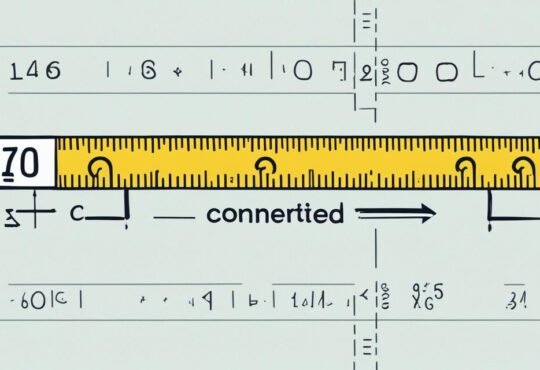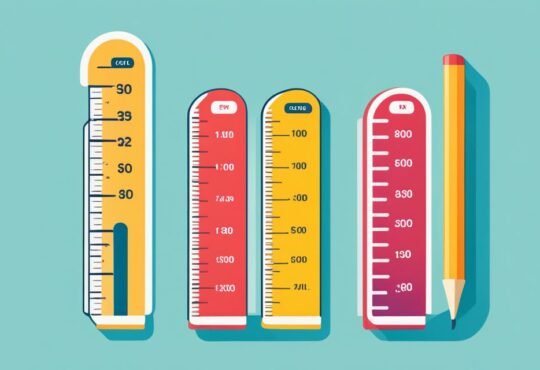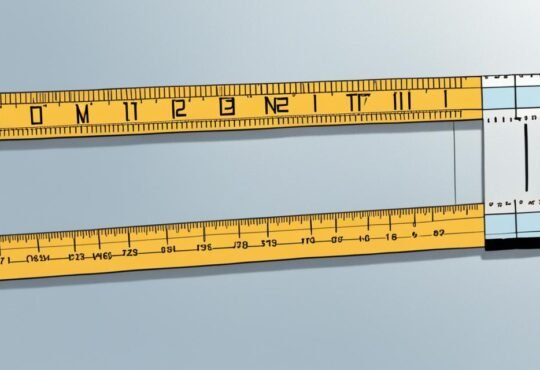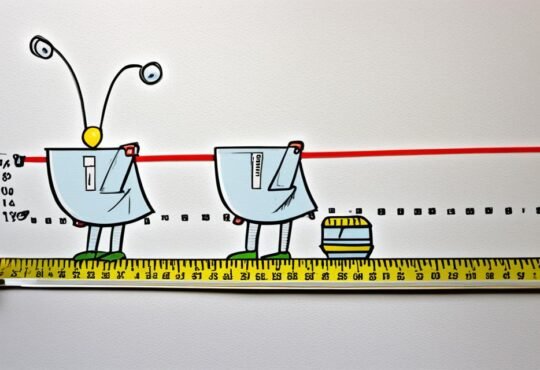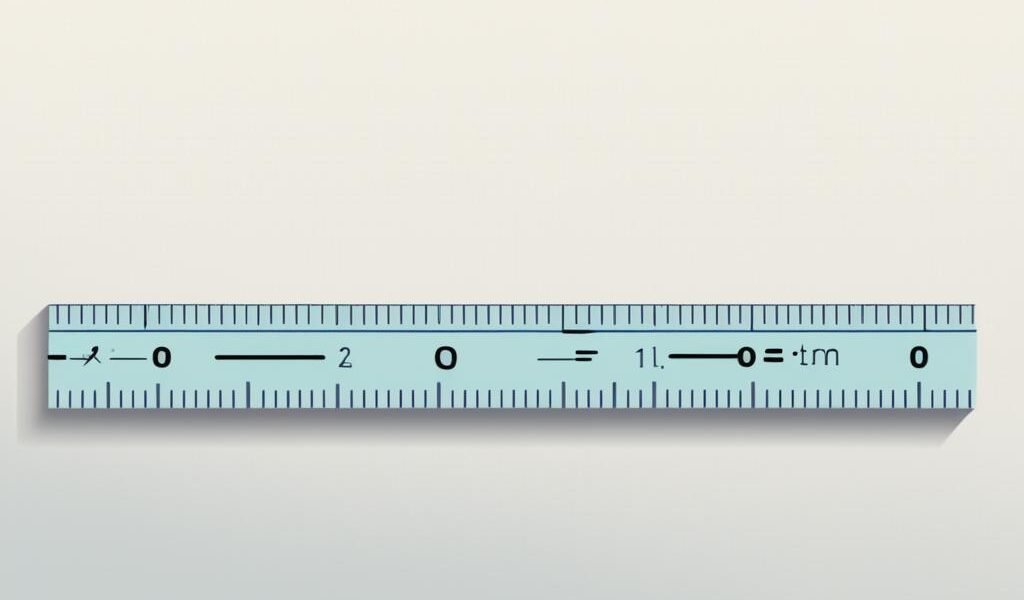
Convert 143cm to Meters – Quick & Easy Guide
Are you in need of converting 143cm to meters? Look no further! We have a quick and easy guide to help you with this conversion. Whether you’re working on a project, planning a trip, or simply curious, knowing how to convert centimeters to meters can come in handy.
To convert 143 centimeters to meters, simply divide 143 by 100, since there are 100 centimeters in a meter. The result is 1.43 meters! It’s as simple as that. Now you have the measurement in meters, which is widely used in various fields around the world.
Converting measurements is essential for accurate calculations and comparisons. So, whether you’re dealing with clothing sizes, construction plans, or scientific data, having the ability to convert centimeters to meters can make your life easier.
Contents
- 1 Convert 143 Centimeters to Feet
- 2 143 Centimeters in Other Units
- 3 Why Convert Centimeters to Meters?
- 4 Men’s Clothing Size Guide
- 5 Men’s Footwear Size Guide
- 6 Men’s Accessories Size Guide
- 7 Conclusion
- 8 FAQ
- 8.1 How do I convert 143 centimeters to meters?
- 8.2 What is the equivalent of 143 centimeters in feet?
- 8.3 How many inches is 143 centimeters?
- 8.4 What is 143 centimeters in yards?
- 8.5 How many millimeters is 143 centimeters?
- 8.6 Why is it important to convert centimeters to meters?
- 8.7 Is there an online converter to convert centimeters to meters?
- 8.8 How can men determine their clothing sizes?
- 8.9 How can men find their shoe sizes?
- 8.10 Are there size guides for men’s accessories?
- 8.11 How can I convert 143 centimeters to meters quickly?
Key Takeaways:
- Divide the number of centimeters by 100 to convert to meters.
- 143 centimeters is equal to 1.43 meters.
- Converting centimeters to meters allows for easier comparisons and calculations.
- Meters are commonly used in various fields, including science, construction, and engineering.
- Knowing how to convert between different units of measurement is a valuable skill.
Convert 143 Centimeters to Feet
If you need to convert 143 centimeters to feet, it’s a simple calculation. Just divide 143 by 30.48, which is the conversion factor for centimeters to feet. The result is approximately 4.69 feet. Therefore, 143 centimeters is approximately equal to 4.69 feet.
“143 centimeters is equal to 4.69 feet.”
If you want to know exactly how many feet 143 centimeters is, the precise value is 4.692913 feet.
To convert centimeters to feet, you can use the following formula:
Feet = Centimeters / 30.48
As you can see from the table above, 143 centimeters is approximately 4.69 feet in length. This conversion can be useful when working with measurements in different units, especially when it comes to height or distance.
Next, let’s explore how 143 centimeters compare to other units of measurement.
143 Centimeters in Other Units
Converting measurements between different units can be useful in various scenarios. Let’s explore how 143 centimeters can be expressed in inches, yards, and millimeters.
Inches
When converted to inches, 143 centimeters is equivalent to 56.3 inches.
Yards
Approximately, 143 centimeters is equal to 1.56 yards.
Millimeters
143 centimeters can be expressed as 1430 millimeters.
Converting between different units allows for better understanding and comparisons. Whether you’re working on a DIY project, planning your wardrobe, or simply expanding your knowledge, knowing the equivalent measurements can come in handy.
Remember, it’s always beneficial to have a solid grasp on measurement conversions to confidently navigate various contexts.
Why Convert Centimeters to Meters?
Converting centimeters to meters is essential in various fields that utilize the metric system for measurements. It enables easier comparisons and calculations, particularly when dealing with larger measurements. Whether you’re working in construction, science, or any industry where precision matters, understanding how to convert centimeters to meters plays a crucial role in ensuring accurate and standardized measurements.
By converting centimeters to meters, you can simplify complex measurement systems and make it easier to communicate and work with measurements. It allows for consistency and uniformity, making it simpler to interpret and analyze data. This is especially important in international collaborations or when working with diverse measurement systems.
Convenient and Accurate Conversion
When it comes to converting centimeters to meters, you don’t need to rely on manual calculations or complex formulas. There are numerous online converters available that can perform the conversion quickly and accurately. These converters eliminate the need for manual computations and ensure precise results with just a few clicks.
“Converting centimeters to meters becomes effortless with the help of online converters.”
By using a cm to meters converter, you can save time, minimize the risk of error, and seamlessly switch between different measurement units. Whether you’re converting a single measurement or working with multiple values, these online tools provide a convenient and reliable solution for your measurement conversion needs.
Streamlining Measurements for Better Efficiency
One of the primary benefits of converting centimeters to meters is the enhanced efficiency it brings to various tasks. When working with larger measurements, such as dimensions of buildings or objects, using meters instead of centimeters simplifies calculations and improves precision.
Imagine trying to calculate the height of a skyscraper in centimeters—it would be a remarkably long and error-prone process. However, by converting the measurement to meters beforehand, the calculations become quicker, more manageable, and less prone to mistakes.
Enabling Easy Comprehension and Communication
Converting centimeters to meters also makes it easier to comprehend and communicate measurements. While centimeters are suitable for smaller-scale measurements, such as dress sizes or personal heights, meters are more appropriate for larger distances and dimensions.
For instance, when discussing the length of a 100-meter race, it’s easier for people to visualize the distance compared to stating it in centimeters. Meters provide a frame of reference that is more widely understood and relatable, making it simpler to convey information and facilitate effective communication.
In Summary
Converting centimeters to meters offers numerous advantages, including streamlined measurements, efficient calculations, and improved communication. Whether you’re a student, a professional, or simply someone curious about conversions, knowing how to convert between these two units is an essential skill. Online converters make the process hassle-free, allowing for accurate and convenient conversions with ease. So the next time you encounter centimeters and need to convert them to meters, reach for a reliable converter and enjoy the benefits it brings.
Men’s Clothing Size Guide
When it comes to finding the perfect fit for your clothing, accurate measurements are key. Men can use a measuring tape to determine their sizes for tops and bottoms. The size charts provide the corresponding sizes in EU and US sizes, ensuring a comfortable and stylish fit.
Tops Size Chart
For tops such as shirts and jackets, the chest circumference is the primary measurement to consider. Use a measuring tape and wrap it around the widest part of your chest, just under the armpits. Make sure the tape is snug but not too tight. Once you have the measurement, consult the size chart below to find your perfect fit.
| Size | EU Size | US Size | Chest Circumference (inches) |
|---|---|---|---|
| Small | 46-48 | 36-38 | 36-38 |
| Medium | 50-52 | 40-42 | 40-42 |
| Large | 54-56 | 44-46 | 44-46 |
| X-Large | 58-60 | 48-50 | 48-50 |
Bottoms Size Chart
When it comes to pants or jeans, two measurements are essential: waist circumference and hip circumference. Measure your waist by wrapping the tape around the narrowest part of your natural waistline. For hip measurement, place the tape around the fullest part of your hips. Take note of both measurements and refer to the size chart below to discover your ideal size.
| Size | EU Size | US Size | Waist Circumference (inches) | Hip Circumference (inches) |
|---|---|---|---|---|
| Small | 46-48 | 36-38 | 30-32 | 36-38 |
| Medium | 50-52 | 40-42 | 32-34 | 38-40 |
| Large | 54-56 | 44-46 | 36-38 | 40-42 |
| X-Large | 58-60 | 48-50 | 40-42 | 42-44 |
By using this comprehensive size guide, you can confidently shop for men’s clothing with ease and precision. Remember to consider your measurements and refer to the size charts to find the perfect fit in both EU and US sizes.
Men’s Footwear Size Guide
When it comes to finding the perfect fit for your shoes, knowing your accurate size is essential. Men can easily determine their shoe sizes by following a simple measurement process. By using a measuring tape, you can find the length of your feet, which will help you choose the right size.
To measure your feet accurately, start by placing the back of the measuring tape against the back of your heel. Extend the tape to the longest toe, ensuring it follows the natural curve of your foot. Take note of the measurement in either inches or centimeters.
Most shoes available in the market use European sizing standards. However, for a better understanding, we have provided the corresponding US sizes based on foot length in the table below:
| Foot Length (inches) | US Size | EU Size |
|---|---|---|
| 9.25 | 7 | 40 |
| 9.5 | 7.5 | 40-41 |
| 9.625 | 8 | 41 |
| 9.75 | 8.5 | 41-42 |
Use the foot length measurement you obtained to find your corresponding size in both US and EU measurements. This will ensure a comfortable fit for your chosen footwear.
Knowing how to measure your feet accurately and understanding the shoe sizes based on these measurements will help you find the perfect fit for your next pair of shoes, whether you’re shopping online or in-store.
Men’s Accessories Size Guide
When it comes to men’s accessories, finding the right size is crucial for a comfortable and stylish fit. Whether you’re looking for gloves, headwear, or joint and muscle supports, knowing your measurements can make all the difference. To help you find the perfect fit, we’ve put together size charts that provide the corresponding sizes based on specific measurements.
Gloves Size Chart
For gloves, the most important measurement is the palm circumference. Use a measuring tape to measure around the widest part of your dominant hand, just below the knuckles. Once you have your palm circumference, refer to the size chart below to find your glove size.
| Palm Circumference (in inches) | Glove Size |
|---|---|
| 7 – 7.5 | Small |
| 7.5 – 8 | Medium |
| 8 – 8.5 | Large |
| 8.5 – 9 | X-Large |
Headwear Size Chart
For headwear, such as hats and caps, the head circumference is the key measurement. Wrap a measuring tape around your head, just above your ears and across your forehead, where the hat would comfortably sit. Once you have your head circumference, refer to the size chart below to find your headwear size.
| Head Circumference (in inches) | Headwear Size |
|---|---|
| 21 – 22 | Small |
| 22 – 23 | Medium |
| 23 – 24 | Large |
| 24 – 25 | X-Large |
Joint and Muscle Supports Size Chart
If you’re in need of joint and muscle supports, it’s important to choose the right size for optimal support and comfort. The size chart below provides guidance based on the circumference measurements of the affected area.
| Joint/Muscle | Circumference (in inches) | Support Size |
|---|---|---|
| Wrist | 5 – 6 | Small |
| Elbow | 8 – 10 | Medium |
| Knee | 12 – 14 | Large |
| Ankle | 9 – 11 | X-Large |
By referring to these size charts, you can confidently select the right accessories that fit you perfectly. Whether it’s gloves, headwear, or joint and muscle supports, finding the right size ensures optimal comfort and functionality.
Conclusion
Now that you know how to convert 143cm to meters, you can easily make this calculation whenever needed. By dividing 143 by 100, you will find that 143 centimeters is equal to 1.43 meters. It’s a simple conversion that allows for accuracy and precision in measurements.
Additionally, using a men’s clothing size guide is essential for finding the perfect fit. Whether it’s clothing, footwear, or accessories, understanding your size based on specific measurements can make shopping much easier. By referring to size charts, you can confidently select the right sizes in US and EU standards, ensuring a comfortable and stylish look.
By combining your knowledge of conversions and utilizing the men’s clothing size guide, you can make informed choices when shopping. Whether you’re looking for a new outfit, a pair of shoes, or accessories like gloves or headwear, knowing your size will guarantee a great fit and enhance your overall shopping experience.
FAQ
How do I convert 143 centimeters to meters?
To convert 143 centimeters to meters, divide 143 by 100. The result is 1.43 meters.
What is the equivalent of 143 centimeters in feet?
To convert 143 centimeters to feet, divide 143 by 30.48. The result is approximately 4.69 feet.
How many inches is 143 centimeters?
143 centimeters is equivalent to 56.3 inches.
What is 143 centimeters in yards?
143 centimeters is approximately 1.56 yards.
How many millimeters is 143 centimeters?
143 centimeters is equal to 1430 millimeters.
Why is it important to convert centimeters to meters?
Converting centimeters to meters allows for easier comparisons and calculations, especially when dealing with larger measurements.
Is there an online converter to convert centimeters to meters?
Yes, there are several online converters available that can quickly and accurately convert centimeters to meters.
How can men determine their clothing sizes?
Men can use size charts and measure specific parts of their bodies, such as chest circumference for tops and waist and hip circumference for bottoms, to find their clothing sizes.
How can men find their shoe sizes?
Men can measure the length of their feet using a measuring tape and refer to a size guide that provides corresponding US sizes based on foot length.
Are there size guides for men’s accessories?
Yes, there are size charts available for men’s accessories such as gloves, headwear, and joint and muscle supports. These guides provide the corresponding sizes based on specific measurements like palm circumference for gloves and head circumference for headwear.
How can I convert 143 centimeters to meters quickly?
The quickest way to convert 143 centimeters to meters is to divide 143 by 100. The result is 1.43 meters.

